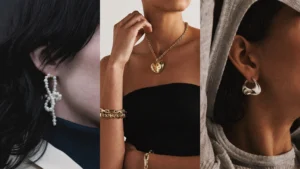
Vogue
Introduction
Vogue, often hailed as the “fashion bible,” has had an enduring influence on fashion and pop culture for over a century. From its modest beginnings as a weekly society publication to its evolution into a global authority on fashion, Vogue has transcended the boundaries of the traditional magazine format. Today, it exists as an international multimedia entity with a firm grip on both high fashion and mass culture. This article delves deep into Vogue’s history, its journey to becoming a fashion powerhouse, and its impact on both the fashion industry and society at large.
The Founding of Vogue: From Society Pages to Fashion Authority
Vogue was established in 1892 by Arthur Baldwin Turnure as a weekly magazine primarily aimed at New York’s high society. At its inception, the publication focused on topics of interest to the city’s elite, such as social etiquette, fashion, and ceremonial events. While the content initially targeted the upper class, it soon became clear that fashion was the cornerstone of the magazine’s appeal.
The early success of Vogue laid the foundation for its future as a global fashion authority. Though it began as a niche publication, covering the nuances of high society, its evolution toward covering fashion and lifestyle marked the beginning of a broader cultural impact.
Condé Nast and Vogue’s Golden Era
In 1909, a critical turning point in Vogue’s history occurred when Condé Nast, a visionary publisher, acquired the magazine. Under his leadership, the publication began to grow into something more significant than its origins as a society magazine. Nast transformed Vogue into a high-end fashion magazine, emphasizing quality over quantity. He introduced subscriptions, increased the size of the publication, and began featuring detailed articles on the latest fashion trends.
Vogue’s “Golden Era” came in the 1920s and 1930s, a period that solidified its place in the fashion world. The magazine began to incorporate high-quality photography and illustrations, which was a revolutionary move in the publishing world at the time. These elements brought a new level of sophistication to the magazine, making it visually distinct from competitors. Vogue’s covers, many of which were designed by famous artists and photographers, became a hallmark of the brand’s identity.
This era also marked the beginning of Vogue’s global reach. Condé Nast’s vision of expanding Vogue beyond the United States led to the launch of international editions, further cementing its role as the leader in fashion media.
Vogue as a Trendsetter: Shaping Fashion and Society
One of Vogue’s most defining qualities is its ability to not only reflect fashion trends but also to shape them. Throughout its history, Vogue has consistently been at the forefront of every major fashion movement. Whether it was the flapper dresses of the 1920s, the glamorous looks of the 1950s, or the bold styles of the 1980s, Vogue has been instrumental in making these trends mainstream.
The magazine’s editors have always played a crucial role in this process. Legendary names like Diana Vreeland, Grace Coddington, and Anna Wintour have all had a significant impact on the fashion industry through their work at Vogue. These editors have not only dictated fashion trends but have also shaped the cultural zeitgeist by promoting new designers, popularizing specific styles, and using the magazine as a platform to address social and cultural issues.
Anna Wintour, who became the editor-in-chief in 1988, took Vogue to new heights with her keen sense of what the public wanted. Wintour’s vision included the introduction of celebrity culture into fashion, with her iconic decision to put Madonna on the cover in 1989, a move that broke traditional fashion boundaries. Today, Wintour’s influence on both fashion and popular culture is undeniable, as she continues to shape trends through Vogue’s pages.
The Global Expansion of Vogue
Vogue’s journey from a New York society magazine to a global fashion empire didn’t happen overnight. A significant part of this transformation occurred through the magazine’s international expansion. The first international edition, *Vogue UK*, was launched in 1916 due to disruptions in importing American publications during World War I. This expansion laid the groundwork for future international editions in countries like France, Italy, and Japan, each bringing a unique flavor to the Vogue brand.
By launching these international editions, Vogue didn’t just export American fashion; it absorbed local trends and cultural nuances, creating a rich blend of global styles. *Vogue Paris* and *Vogue Italia* are particularly noteworthy for their bold editorial content and avant-garde fashion photography, influencing not just local fashion markets but the global industry. Each edition of Vogue maintains a distinct voice while contributing to the overarching influence of the brand.
As the world’s premier fashion magazine, Vogue has also been a platform for promoting diversity in fashion, bringing voices and styles from different cultures to the forefront. Whether featuring international designers or covering global fashion weeks, Vogue’s international presence ensures that fashion is not just a Western phenomenon but a global one.
Vogue and Pop Culture: Beyond Fashion
While Vogue is predominantly known for its influence on fashion, it has also become a significant player in shaping popular culture. This influence is most prominently displayed in Vogue’s coverage of celebrities. The magazine’s covers have featured an array of famous figures, from Hollywood stars to influential musicians, politicians, and even athletes. These cover stars have helped shape the magazine’s image and broaden its appeal beyond fashion enthusiasts to the general public.
One of the most notable ways Vogue intersects with pop culture is through its annual *Met Gala*, often dubbed the “Oscars of Fashion.” The event, which Vogue curates, is a lavish affair where celebrities, designers, and influencers showcase their most daring and creative looks based on the gala’s theme. The Met Gala not only celebrates fashion but also serves as a cultural touchstone, highlighting the intersection of fashion, art, and celebrity.
In addition to high-profile events like the Met Gala, Vogue has used its platform to explore issues beyond fashion. Articles addressing gender, race, politics, and sustainability have become more prevalent, especially under Anna Wintour’s leadership. This shift reflects a broader cultural trend where fashion publications are expected to engage with social issues and lead meaningful conversations about the role of fashion in society.
Vogue in the Digital Age: Adapting to New Media
The rise of digital media in the 21st century presented new challenges for traditional print magazines like Vogue. However, the publication has successfully adapted by embracing new technologies and platforms. Vogue’s website, Vogue.com, has become a leading digital destination for fashion news, trends, and exclusive content.
The magazine’s social media presence has also played a crucial role in maintaining its relevance in an increasingly digital world. With millions of followers across platforms like Instagram, Twitter, and YouTube, Vogue has been able to reach a broader, more diverse audience. The magazine’s video content, including the popular “73 Questions” series, has further expanded its digital footprint, making fashion more accessible to the masses.
Despite the challenges posed by the digital revolution, Vogue has maintained its position as a fashion authority by staying ahead of the curve. The publication’s ability to blend print and digital media ensures that it remains relevant in an ever-changing landscape.
Sustainability and Fashion: Vogue’s Role in Promoting Change
As the fashion industry grapples with the growing demand for sustainability, Vogue has positioned itself as a leader in promoting ethical and eco-friendly practices. The magazine has increasingly featured designers who prioritize sustainability, and it has used its platform to highlight the importance of ethical fashion production.
In recent years, Vogue has dedicated more editorial space to topics like the environmental impact of fast fashion, the importance of circular fashion systems, and the rise of sustainable materials. This shift reflects the growing awareness within the fashion industry of its responsibility to reduce its environmental footprint.
By championing sustainability, Vogue is not only reflecting a broader societal trend but also pushing the fashion industry to take concrete steps toward a more sustainable future. As the industry’s most influential voice, Vogue has the power to effect real change, making sustainability more than just a passing trend.
Conclusion
Vogue’s legacy as a fashion authority is undeniable. From its humble beginnings as a weekly society magazine to its current status as a global multimedia empire, Vogue has consistently shaped the fashion industry and influenced popular culture. Through its ability to adapt to changing times, its global expansion, and its embrace of digital media, Vogue has maintained its relevance and continued to lead the way in fashion and beyond. As the magazine continues to evolve, its role as a cultural and fashion institution remains as strong as ever.
FAQ’s
1. When was Vogue founded, and what was its original purpose?
Vogue was founded in 1892 by Arthur Baldwin Turnure as a weekly publication primarily aimed at New York’s high society. Initially, it focused on topics such as social etiquette, fashion, and ceremonial events for the city’s elite.
2. What was Condé Nast’s impact on Vogue?
Condé Nast acquired Vogue in 1909 and transformed it into a high-end fashion magazine. He introduced subscriptions, increased the magazine’s size, and began featuring high-quality photography and illustrations, positioning Vogue as a leader in fashion media. This era, known as Vogue’s “Golden Era,” solidified its influence in the fashion world.
3. How does Vogue shape fashion trends?
Vogue not only reflects fashion trends but actively shapes them. Throughout its history, the magazine has been at the forefront of major fashion movements, from the flapper dresses of the 1920s to today’s trends. Influential editors like Anna Wintour have played a significant role in determining the direction of global fashion and pop culture.
4. How did Vogue expand its influence globally?
Vogue began its global expansion with the launch of *Vogue UK* in 1916, followed by other international editions such as *Vogue Paris* and *Vogue Italia*. Each edition blends local fashion with global trends, helping to establish Vogue as a worldwide fashion authority. These editions also promote diversity in fashion by highlighting local designers and styles.
5. What role does Vogue play in promoting sustainability in fashion?
In recent years, Vogue has become a leader in advocating for sustainability in fashion. The magazine regularly features eco-friendly designers, sustainable materials, and ethical fashion practices. By using its platform to promote responsible fashion, Vogue is helping to push the industry toward more sustainable and environmentally conscious practices.






